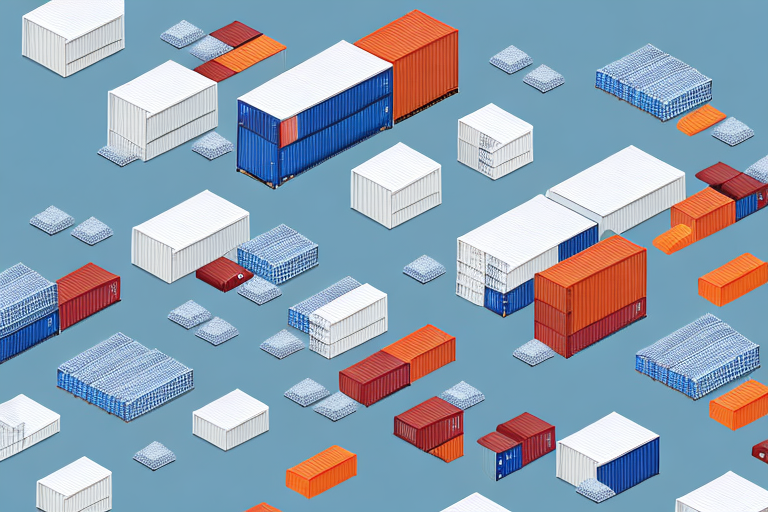Importance of Parcel Shipment Efficiency
In today's competitive market, optimizing parcel shipments is essential for businesses aiming to enhance their logistics operations. Efficient parcel shipping directly influences the overall cost, delivery speed, and quality of service provided to customers.
Impact on Cost and Quality
Efficient parcel shipping can significantly reduce transportation costs by optimizing routes and consolidating shipments. According to a Inbound Logistics report, businesses can save up to 20% on shipping costs by implementing effective optimization strategies. Additionally, streamlined shipping processes minimize errors, reduce the likelihood of damaged goods, and ensure timely deliveries.
Customer Satisfaction
Customers today expect fast and reliable delivery services. Efficient parcel shipping ensures that products reach customers promptly and in good condition, leading to increased customer satisfaction and loyalty. A study by Forbes highlights that 80% of customers consider delivery speed as a key factor in their purchasing decisions.
Key Factors Influencing Parcel Shipment Efficiency
Accurate Packaging
Proper packaging is crucial for protecting products during transit and minimizing shipping costs. Using the right size and weight of packaging materials can prevent unnecessary dimensional weight charges and reduce the risk of damage. According to the Packaging Digest, businesses can decrease packaging costs by up to 15% through optimized packaging solutions.
Transportation Mode and Carrier Selection
Choosing the appropriate transportation mode and reliable carriers is essential for efficient parcel shipping. Factors such as delivery speed, cost, and carrier performance should be considered. Research from the Picktopak indicates that selecting the right carrier can enhance delivery reliability and reduce shipping delays.
Distance and Delivery Times
Geographical distance plays a significant role in determining delivery times and costs. Optimizing delivery routes using route planning software can reduce transit times and fuel consumption. The Geopointe blog states that route optimization can lead to a 10-15% reduction in delivery times.
Leveraging Technology and Data Analytics
Automated Systems and Real-Time Tracking
Implementing automated sorting systems and real-time tracking technologies can enhance parcel shipment efficiency. These technologies allow businesses to monitor shipments in real-time, reduce manual errors, and improve overall logistics management. According to Logistics Management, real-time tracking can improve delivery accuracy by up to 25%.
Transportation Management Systems (TMS)
Transportation Management Systems (TMS) help businesses optimize carrier selection, manage freight costs, and improve shipment visibility. A Supply Chain Digital guide highlights that companies using TMS report a 15-20% increase in operational efficiency.
Predictive Analytics
Predictive analytics enables businesses to forecast demand, optimize inventory levels, and adjust shipping strategies proactively. By analyzing historical data and market trends, companies can anticipate peaks in shipping volumes and allocate resources accordingly. According to a report by McKinsey, predictive analytics can enhance supply chain forecasting accuracy by up to 30%.
Best Practices for Optimizing Parcel Shipments
Streamlining the Shipping Process
Businesses can streamline their shipping processes by automating repetitive tasks, integrating shipping software, and standardizing procedures. Utilizing shipping software can automate label printing, carrier selection, and tracking, reducing manual workload and errors. According to ShipBob, businesses that implement shipping software see a 50% reduction in processing time.
Choosing a Reliable Parcel Carrier
Selecting a reliable parcel carrier is critical for ensuring timely and accurate deliveries. Factors to consider include carrier reputation, service coverage, delivery speed, and customer service quality. A UPS study indicates that choosing the right carrier can improve delivery performance by up to 40%.
Balancing Cost and Efficiency
Balancing cost and efficiency involves evaluating shipping options based on budget constraints and customer expectations. Businesses should assess different carriers, negotiate rates, and explore cost-effective shipping methods without compromising delivery quality. According to the Business News Daily, effective cost management in shipping can save businesses up to 20% annually.
Overcoming Common Challenges in Parcel Shipping
Managing Peak Seasonal Volumes
During peak seasons, shipping volumes can surge, leading to delays and increased costs. To manage this, businesses should plan ahead by securing additional carriers, increasing warehouse capacity, and utilizing scalable shipping software. A report by Shopify suggests that proactive planning can reduce peak season disruptions by 30%.
Preventing Damage and Loss
Damage or loss of parcels can result in additional costs and dissatisfied customers. Implementing high-quality packaging materials, conducting regular training for handling staff, and using tracking technologies can mitigate these risks. According to the Inc. guide on packaging, businesses can decrease damage rates by up to 25% with proper packaging strategies.
Future Trends in Parcel Shipping
Innovative Solutions
Innovative solutions such as drone deliveries and smart packaging are revolutionizing parcel shipping. Drones can provide faster delivery in remote areas, while smart packaging equipped with sensors can monitor shipment conditions in real-time. A forecast by Forbes Technology Council predicts significant growth in drone-based deliveries by 2025.
Autonomous Delivery Vehicles
Autonomous delivery vehicles, including robots and self-driving trucks, are set to transform last-mile delivery by reducing labor costs and improving delivery speeds. According to BBC News, autonomous delivery is expected to account for 15% of parcel deliveries by 2030.
Measuring Success: Key Metrics
Measuring the success of parcel shipment optimization strategies is crucial for continuous improvement. Key metrics to track include:
- On-Time Delivery Rates: The percentage of shipments delivered on schedule.
- Shipping Costs as a Percentage of Revenue: Total shipping expenses relative to overall revenue.
- Customer Satisfaction Ratings: Feedback from customers regarding their delivery experience.
- Delivery Accuracy: The rate of shipments delivered to the correct address without errors.
By monitoring these metrics, businesses can identify areas for improvement and adjust their shipping strategies accordingly. Benchmarking against industry standards can also help maintain a competitive edge.
Conclusion
Optimizing parcel shipments is vital for businesses seeking to enhance their logistics operations, reduce costs, and improve customer satisfaction. By understanding the key factors that influence shipment efficiency, leveraging advanced technologies, implementing best practices, and staying ahead of future trends, businesses can achieve a streamlined and effective parcel shipping strategy. Continuous measurement and adaptation will ensure that businesses remain competitive in the ever-evolving landscape of parcel shipping.








